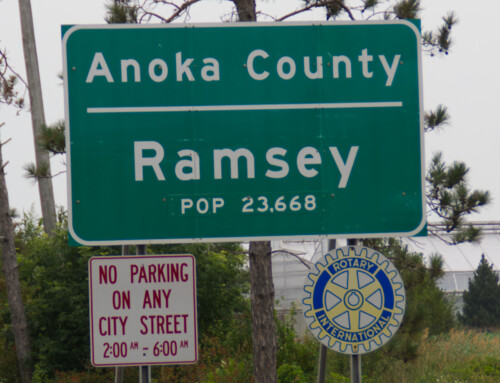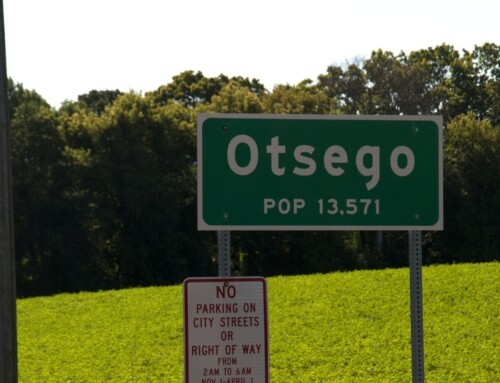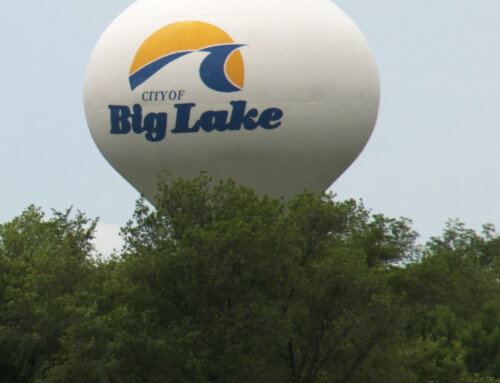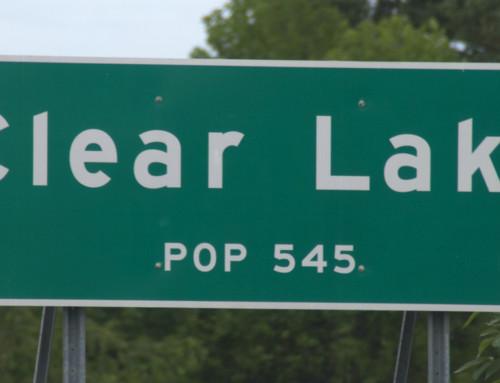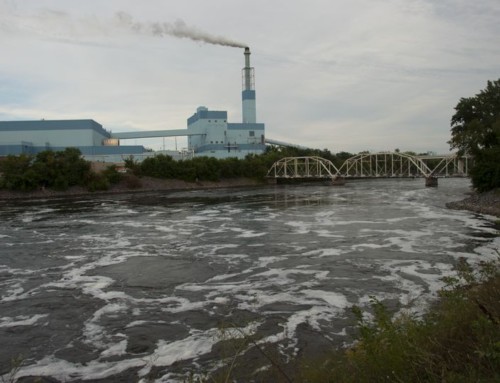Population (2010)
4,830

Introduction
When John S. Harris planted apple trees in southeast Minnesota in 1857, skeptics heckled. Through persistence and selective breeding, he eventually proved them wrong and created apples that could thrive in the often harsh Minnesota climate. Fast forward 150 years and the apple orchards are well established and LaCrescent is the Apple Capital of Minnesota, producing multiple mouth watering varieties like Honeycrisp and Keepsake every year.
Visitor Information
The La Crescent Chamber of Commerce is the place to get your questions answered (111 S. Walnut, Suite B; 507.895.2800).
History
When Peter Cameron, a native of New York, built a log house in 1851 and Thor Halverson, a native of Norway, did the same the following year, they joined a long line of people who were attracted to this small, elevated prairie near the Mississippi River. The future village site was marked by dozens of burial mounds and evidence abounded of ancient peoples who lived here.
Cameron had been trading along the Upper Mississippi since the early 1840s and had business interests in La Crosse. He and his wife Emma were married in 1845 in La Crosse, the first couple to be married in the city. Emma was quite familiar with the marriage ritual; she went through it 11 times; Peter was her fourth husband. Peter had big plans for La Crescent that were hampered by poor access to the Mississippi River; the village was separated from the river by a mile of sloughs and marshes. Cameron figured the best solution was to build a canal that would connect the town to the river (and in the process might have diverted the main channel from La Crosse to La Crescent), but he died in 1855 while building a sawmill in La Crosse, and the canal plan also came to a permanent end.
The village was platted in 1855 by Harvey and William Gillett on part of Cameron’s old claim and renamed from Camerons to Manton. They sold all their lots in a year, most of them to the Kentucky Land Company, then left town, probably for a beach in Mexico. The land company wanted a more appealing name, something with a loftier sound, so they chose La Crescent, which they felt evoked the shape of the bluffs. That’s the tale that has survived, anyway.
The Kentucky Land Company got busy building a village. In short order, they built a dozen homes, all very similar two-story houses decorated with elaborate trim, then built a road across the marsh to connect the town to the ferry landing. For 20 years, the only way for La Crescent residents to cross the Mississippi River was down the muddy road to the ferry. This did not encourage rapid growth.
John Harris arrived in 1854 determined to grow apples. When he planted his first crop, skeptics were plentiful, because they assumed the Minnesota climate was too harsh. The critics were wrong, however, and his apples eventually grew very well. Other growers followed suit and orchards became one of the largest industries in the area. Although the number of orchards has declined from forty in the 1960s to a handful today, the number of acres dedicated to growing apples is about the same.
Like other small towns in the area, La Crescent experienced a housing boom after World War II as it grew into a suburb of La Crosse. In 1940, the village had just 815 residents or about one-fifth of what was counted in the 2000 census.
Exploring the Area
The Apple Blossom Scenic Drive (507.895.2800) is a lovely route that loops 10 miles from La Cresent to Dakota atop a ridge and down a coulee. Along the way, you pass by orchards, nice views (stop at the Apple Blossom Scenic Overlook), and retail stores selling produce in season.
Eagles Bluff Park (McIntosh Rd. E.; 507.895.2595) is a protected natural area in the midst of the city with nice views of the river valley. From the starting point described below, the first two-thirds of the hike follows a gentle uphill slope, but it gets steeper for the last leg. When you reach the top, go left and follow the ridge trail to get to a small goat prairie with a view. Allow at least an hour for the round trip. To reach the park, take Elm Street to McIntosh Road and turn east. After the stop sign you will see a sign for the West Bank Addition; park on the street and walk up the hill.
La Crescent’s history is on display at Heritage House (328 S. 3rd St.; 507.895.1857; by appt.), which has fun items like 19th century ice skates, photos from the city’s history, and a shed full of items that tell the history of the local apple industry.
Sports & Recreation
For frozen fun, the La Crescent Community Arena (520 S. 14th St.; 507.895.4160) offers indoor ice skating; check their website for ice times.
Entertainment and Events
Farmers Market
La Crescent hosts a farmers market on Tuesday evenings (4p-7p) from May through October next to the La Crescent Event Center (595 Veteran’s Parkway).
Festivals
Applefest (507.895.2800; mid-September) is La Crescent’s celebration of itself, but it has moved away from its roots celebrating the apple industry into a generic town festival; at least you can tour an orchard and get a slice of apple pie.
**La Crescent is covered in Road Tripping Along the Great River Road, Vol. 1. Click the link above for more. Disclosure: This website may be compensated for linking to other sites or for sales of products we link to.
Where to Eat and Drink
The Sports Hub (25 N. Walnut St.; 507.895.2715) is a neighborhood sports bar with a snappy interior and friendly people. The grill menu is a notch above most bars.
Resources
Post Office: 230 Main St.; 507.895.2233.
La Crescent Public Library: 321 Main St.; 507.895.4047.
Where to Go Next
Heading upriver? Check out Dresbach.
Heading downriver? Check out Brownsville.
Community-supported writing
If you like the content at the Mississippi Valley Traveler, please consider showing your support by making a one-time contribution or by subscribing through Patreon. Book sales don’t fully cover my costs, and I don’t have deep corporate pockets bankrolling my work. I’m a freelance writer bringing you stories about life along the Mississippi River. I need your help to keep this going. Every dollar you contribute makes it possible for me to continue sharing stories about America’s Greatest River!
©Dean Klinkenberg, 2011,2017
